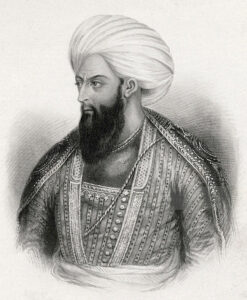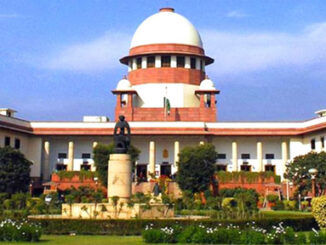5th May

1723 Jassa Singh Ramgarhia was born. Ramgarhia, son of Giani Bhagwan Singh of Saedbaegh village, Lahore. He was an accomplished scholar of weaponry and an effortfull individual. He together with Nand Singh Sanghani constructed the “Ram Rahuni” from scratch. When the Adinabaeg general blew up the Ram Rahuni, Jassa Singh re-erected it and named it “Ram Gadh”. Henceforth, he came to be known as Jassa Singh Ramgarihia. And his group also was popularly known as Ramgarihias. Just like other Sikh misls, the Ramgarihia misl established its rule and served the GurSikh Panth.
1739 Sikhs attacked Nadar on his return trip to Persia and rescued a large booty and thousands of captive Hindu women.
1834 Peshawar conquered and Khalsa raj extended Raj upto Jamraud, Afghanistan. Kanwar Naunihal Singh and Sardar Hari Singh Nalwa conquered Peshawar and extended the territory of Khalsa Raj upto Jamraud (Afghanistan). Further this territory was named Sumaergadh.
1948 Patiala and East Punjab States Union (PEPSU) was formed. EAST PUNJAB STATES: Patiala, Nabha, Jind, Faridkot, and Malerkotla were the Sikh states in the East Punjab before the integration of Indian States in 1948. The first four were the Sikh states under the sovereignty of Maharaja Ranjit Singh and were brought under British protection by the 1809 treaty of Amritsar. Patiala, Nabha, and Jind, also known as Phulkian states, share a common ancestor Phul, who was descendent of Baryam. The Emperor, in 1526, had granted Baryam, the office of revenue collection for the waste country south-west of Delhi. Emperor Shah Jahan continued Phul in this office. From his eldest son descended the families of Nabha and Jind while from his second son the Patiala family. The Faridkot family, founded in the middle 16th century sprang from the same stock as the Phulkians chiefs.
6th May

1897 First year classess of Khalsa College were held in Amritsar. The first year classes of Khalsa College were held in the newly and partly built building in Amritsar, near the present Guru Nanak Dev University campus.
1930 Firing at the Sees Ganj, Delhi.

The police fired on Gurudwara Sees Ganj, Delhi. Congress workers had entered the Gurdwara premises and were throwing brickbats on police. In retaliation, the police fired, when the bullets hit Guru Granth Sahib. This caused widespread resentment among the Sikhs. The SGPC launched a campaign for boycott and picketing of foreign cloth shops in protest against this firing. Though Kharak Singh sought to maintain a distinct identity of the Sees Ganj agitation, it certainly gave strength to the Civil Disobedience Movement. Sikhs contributions to this movement was disproportionately large.
7th May
1665 Guru Tegh Bahadhur visited Kiratpur.
1845 Baba Bir Singh of Naurangabad was assassinated at the hands of the treacherous dogra Raja Hira Singh. He was a great Sikh saint of Khalsa Raj period. BHAI BIR SINGH was born on Saun Sudhi 3 Sunmat 1825, in village Gugobuha (near Amritsar) to father Sewa Singh and mother Matta Dharam Kaur. During his youth, he served in the forces of Maharaja Ranjit Singh.
1923 Maharaja Ripudaman Singh of Nabha deposed by the British.
8th May

1705: Battle of Muktsar and Martyrdom of Chaali Muktey.
1839: Khalsa forces captured Kandhar and established Shah Sujaul Mulak as the ruler.
9th May
1915 Bhai Sahib Randhir Singh arrested for participation in an unsuccessful attempt to attack Ferozepur Fort.
1988 Indian government killed numreous innocent GurSikhs at Sri Darbar Sahib.
10th May
1479 Prakash Utsav, Third Patshah, Guru Amar Das Ji.

1887 Maharaja Dalip Singh sought help of Russian ruler Alexander III to fight against the British government.
1924 6th Jatha of 500 Akalis, led by Prem Singh of Kokri, started its march to Jaito.
1930 Master Tara Singh arrested for marching in support of atrocities against Pathans.
1955 Agitation launched against the imposition of ban on the slogan Punjabi Suba Zindabad was launched. 10,000 courted arrests. This is known as a small agitation for Punjabi Suba.
1984 Giani Pratap Singh, Jathedar Sri Akal Takhat is murdered.
11th May

1835 Dost Mohd. agitated over Sikh occupation of Peshawar in 1834 made war preparation but left battle field at Attock. Dost Mohd., agitated over Sikh occupation of Peshawar, wrote to Maharaja Ranjit Singh to hand over Peshawar or be prepared to face a war. Ranjit Singh sent an equally strong rejoinder. Dost Mohd. made a religious issue to incite fellow tribals against Sikhs and made elaborate preparations. Maharaja Ranjit Singh sent a large force under Hari Singh Nalwa but also played the diplomatic game of breaking away minor tribal chiefs with money and allurements. Gulab Singh and Avitable were sent to Kohat and Venfura joined Maharaja Ranjit Singh at Attock. Dost Mohd. realising his weakness left the field with bag and baggage during night on this day.
1922 Sunder Singh Makhsuspuri and Arjan Singh of Sundh were arrested and Kishan Singh Gargaj narrowly escaped.
1981 Akali party passed resolution Sikhs are a Nation. The Akali Party passes the resolution Sikhs are a Nation. On Mar. 25, 1981 the SGPC unanimously passed the resolution Sikhs are a nation. With the passing of such a resolution by the Sikh Parliament and with the ratification of this resolution by the Jathedar of the Akal Takht on April 21, 1981, the issue stood finally decided by the whole of the Sikh nation. On May 11, 1981, the Akali Party also passed a resolution to that effect.




Be the first to comment